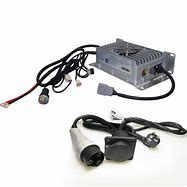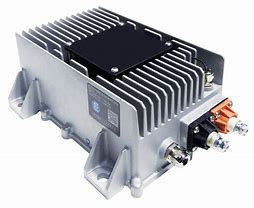Most people think of electric vehicles (EVs) as a novelty, but some of the first cars built in the 19th century were electric. The internal combustion engine (ICE) car quickly took over thereafter, and EVs were quickly forgotten in most cases. During the oil crisis of the 1970s and when the California Air Resources Board (CARB) created the Zero Emission Vehicle (ZEV) program in the 1990s, electric vehicles were on the agenda but failed to dominate.
This time, the EV market is here to stay and has been growing steadily. From the perspective of charging methods, there are two main groups of EVs. The first group contains hybrid electric vehicles (HEVs) and mild hybrid electric vehicles (MHEVs), which charge their own batteries through an internal combustion engine or regenerative braking and energy recovery. The second group includes plug-in hybrid electric vehicles (PHEVs) and battery-operated electric vehicles (BEVs), the types that must be "plugged in" for charging. It is this type of vehicle that requires an On-Board Charger (OBC).

The OBC can accept single-phase or three-phase power and deliver up to 22kW for the fastest charging. Since all batteries require DC current for charging, the core function of the OBC is to rectify the power input and convert it to a charging voltage suitable for the battery - which may be 400V or, increasingly 800V.
The OBC has two main power stages. First is the power factor correction (PFC) stage, which maintains the phase relationship between input current and voltage, minimizing total harmonic distortion (THD) in the line/grid current. This helps reduce any wasted reactive power and improves overall energy efficiency.
The second power stage is the DC-DC converter, which takes the DC output from the PFC stage and converts it to the level required for battery charging. The output voltage and current of the converter change over time-based on the overall health of the battery and the state of charge.
The rectification at the secondary side of a unidirectional OBC can be passive (using diodes) or synchronous, the latter using power switches for better energy efficiency. In a bidirectional OBC, the secondary rectification will require a full bridge supporting CLLC, or the second half of a dual active bridge. In all cases, silicon carbide devices (diodes and switches) will improve energy efficiency and provide stable reliability. However, in some cost-optimized OBC designs, super junction MOSFETs are still used, depending on the level, voltage, and acceptable energy efficiency.
The wide variation in battery capacity within EVs has driven the need for scalability and flexibility in OBC designs. For example, light passenger vehicles typically have battery capacities ranging from 30 kilowatt-hours (kWh) to over 100 kWh, while in larger vehicles such as SUVs, this number can rise to 150 kWh. The trend is now toward increasing battery pack capacities to extend the time between charges in electric vehicles. Some passenger cars entering the market have battery capacities approaching 200kWh, and larger batteries will migrate to 800V to speed up the charging process.


Contact Person: Miss. Kiki
| WhatsApp : | +8617763224709 |
|---|---|
| Skype : | +8617763224709 |
| WeChat : | +8617763224709 |
| Email : | kiki@lifepo4-battery.com |